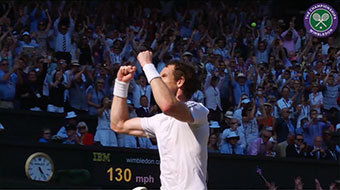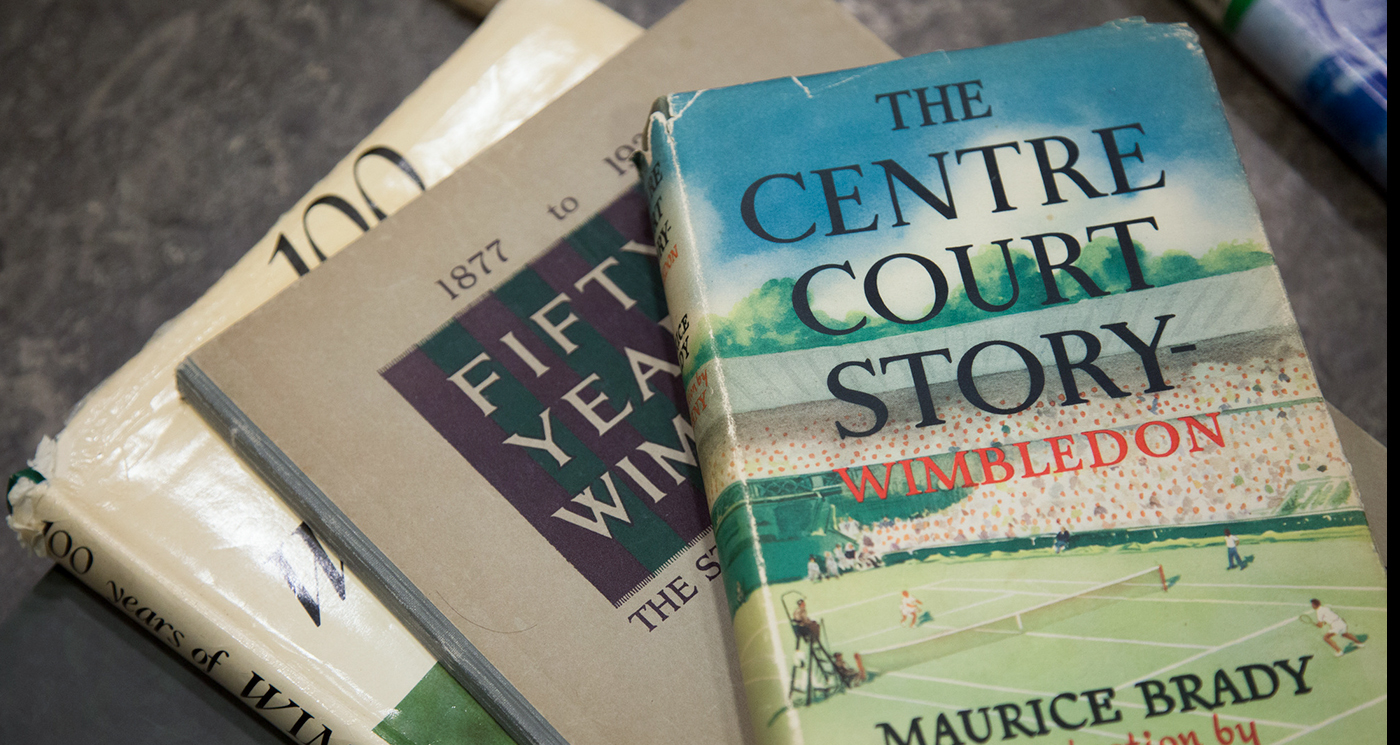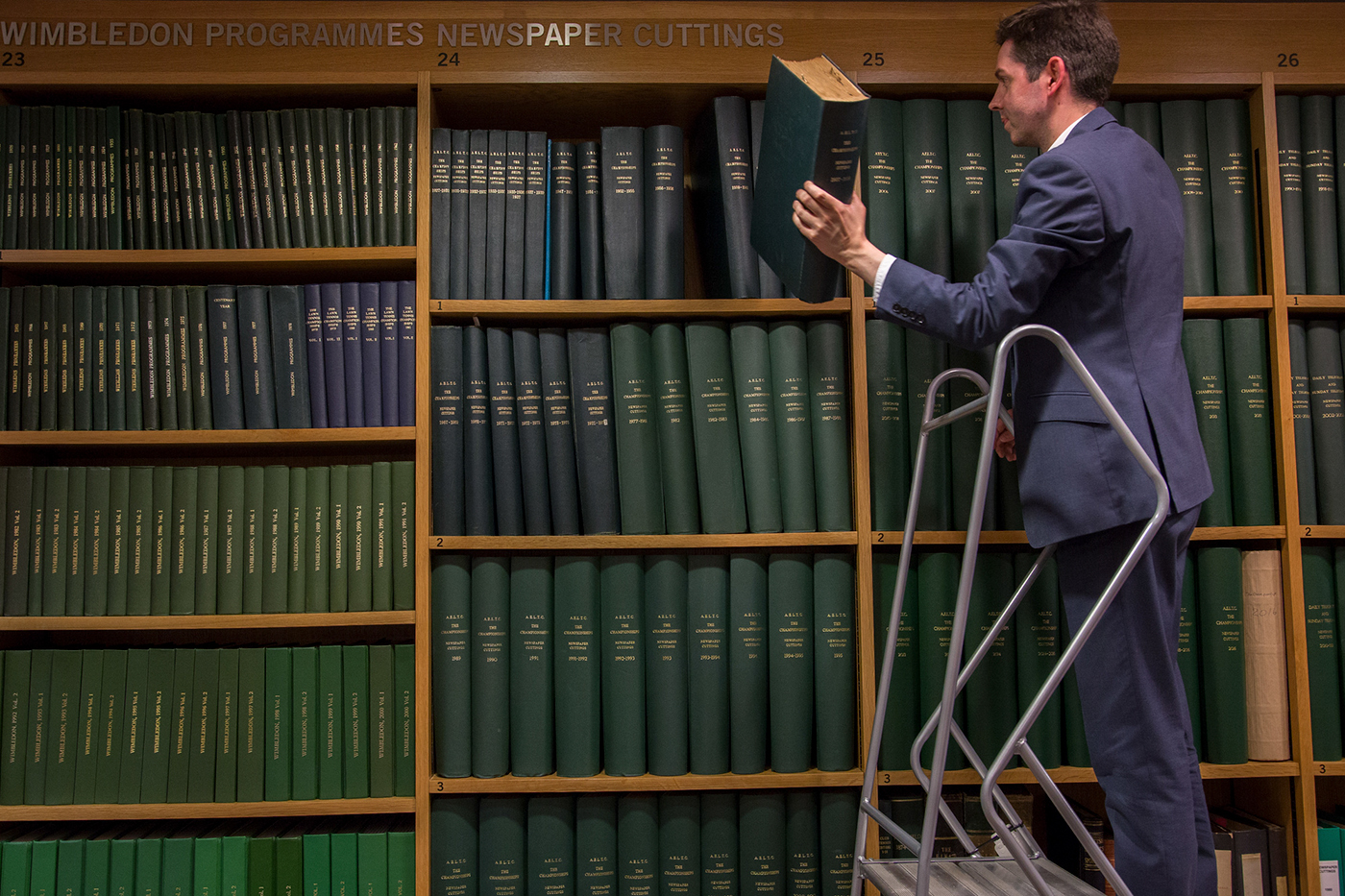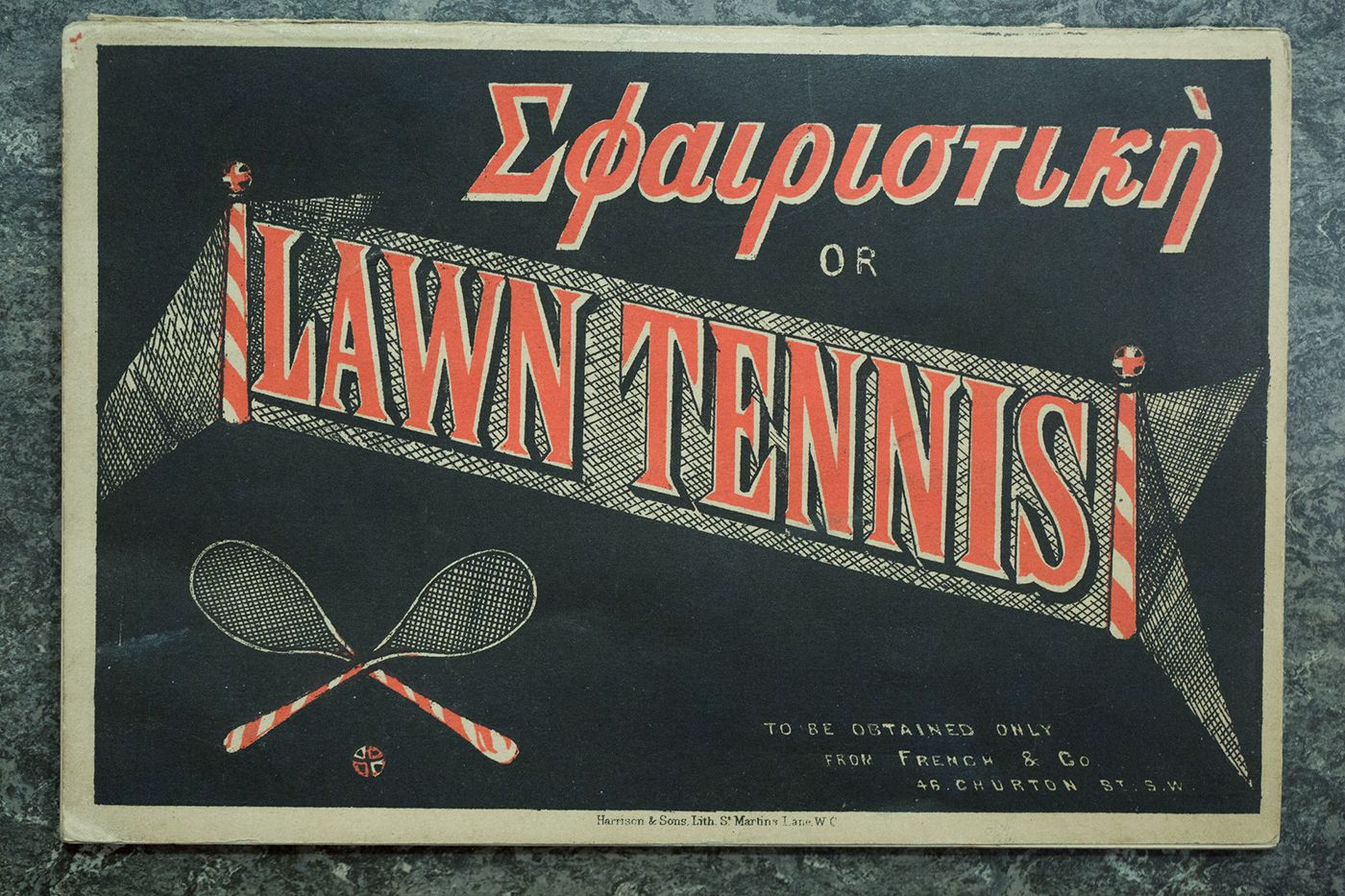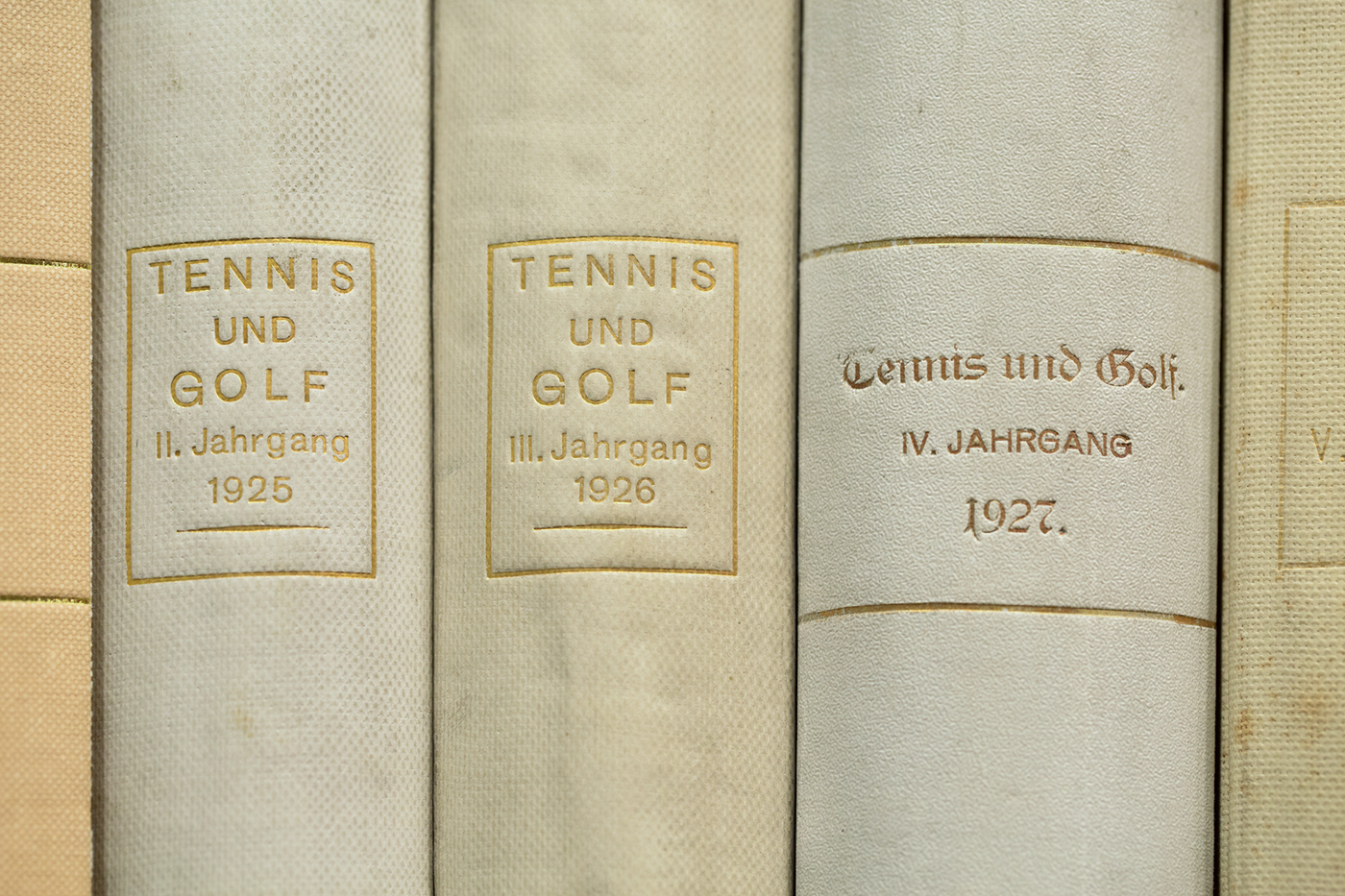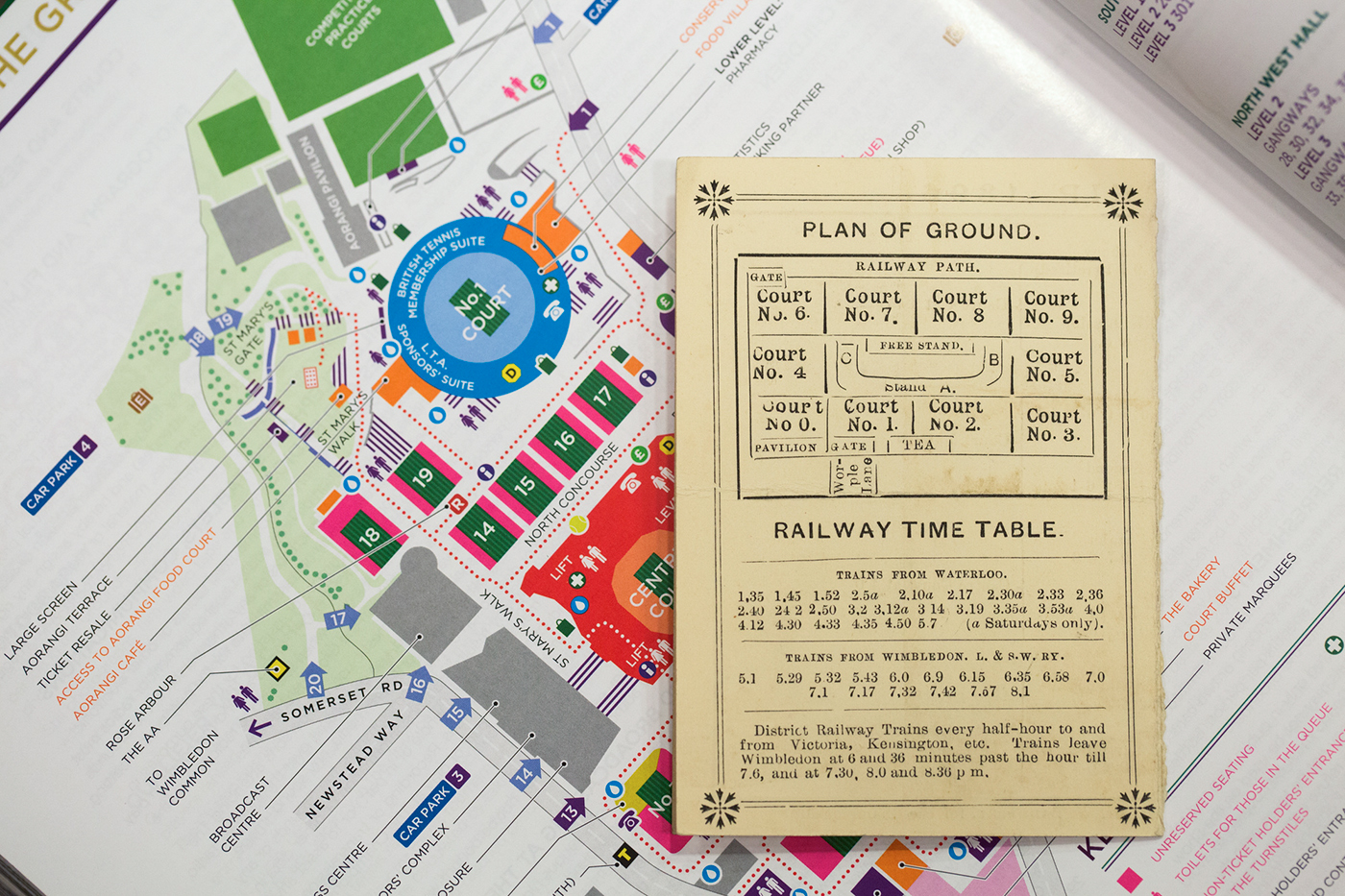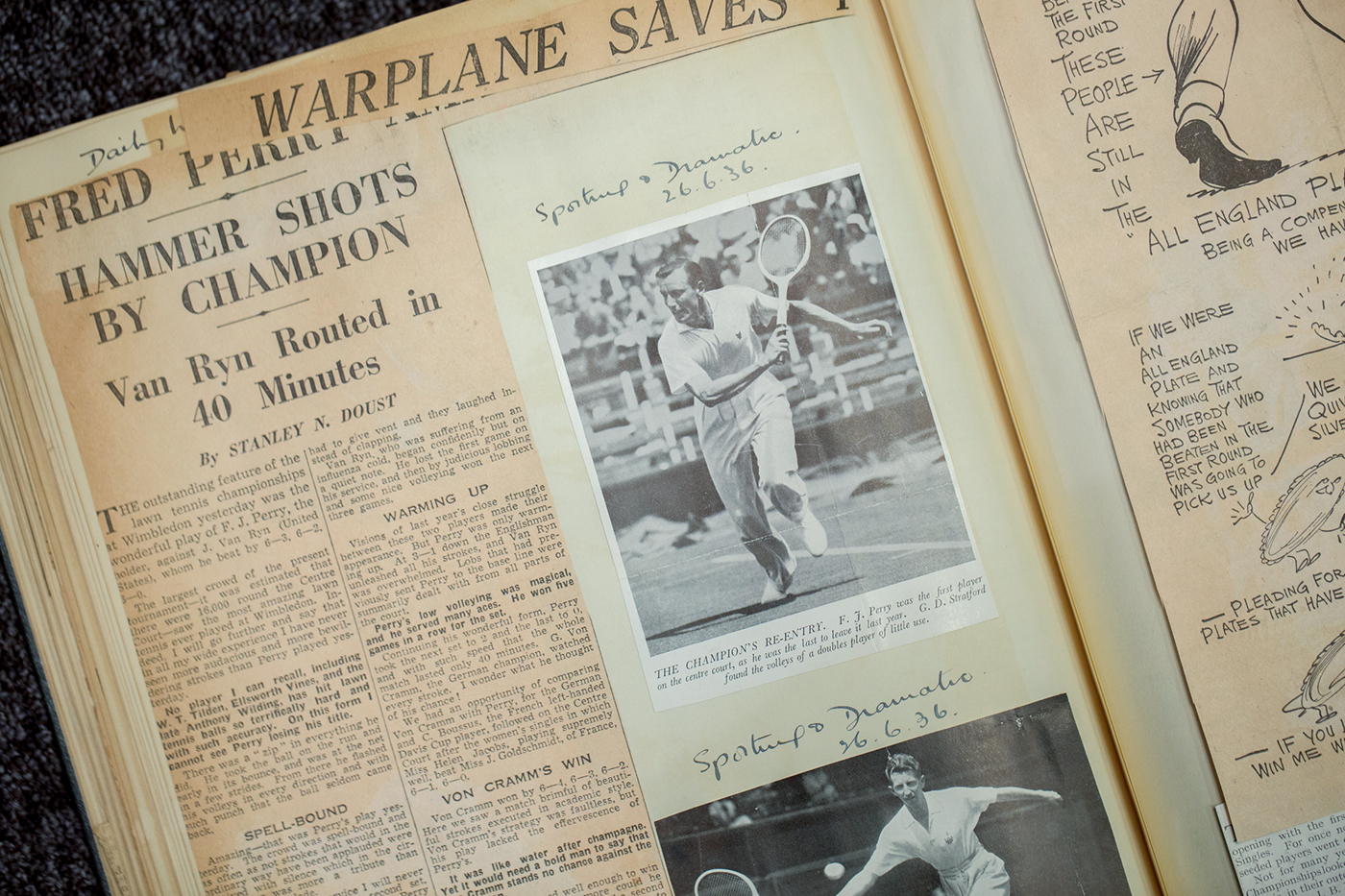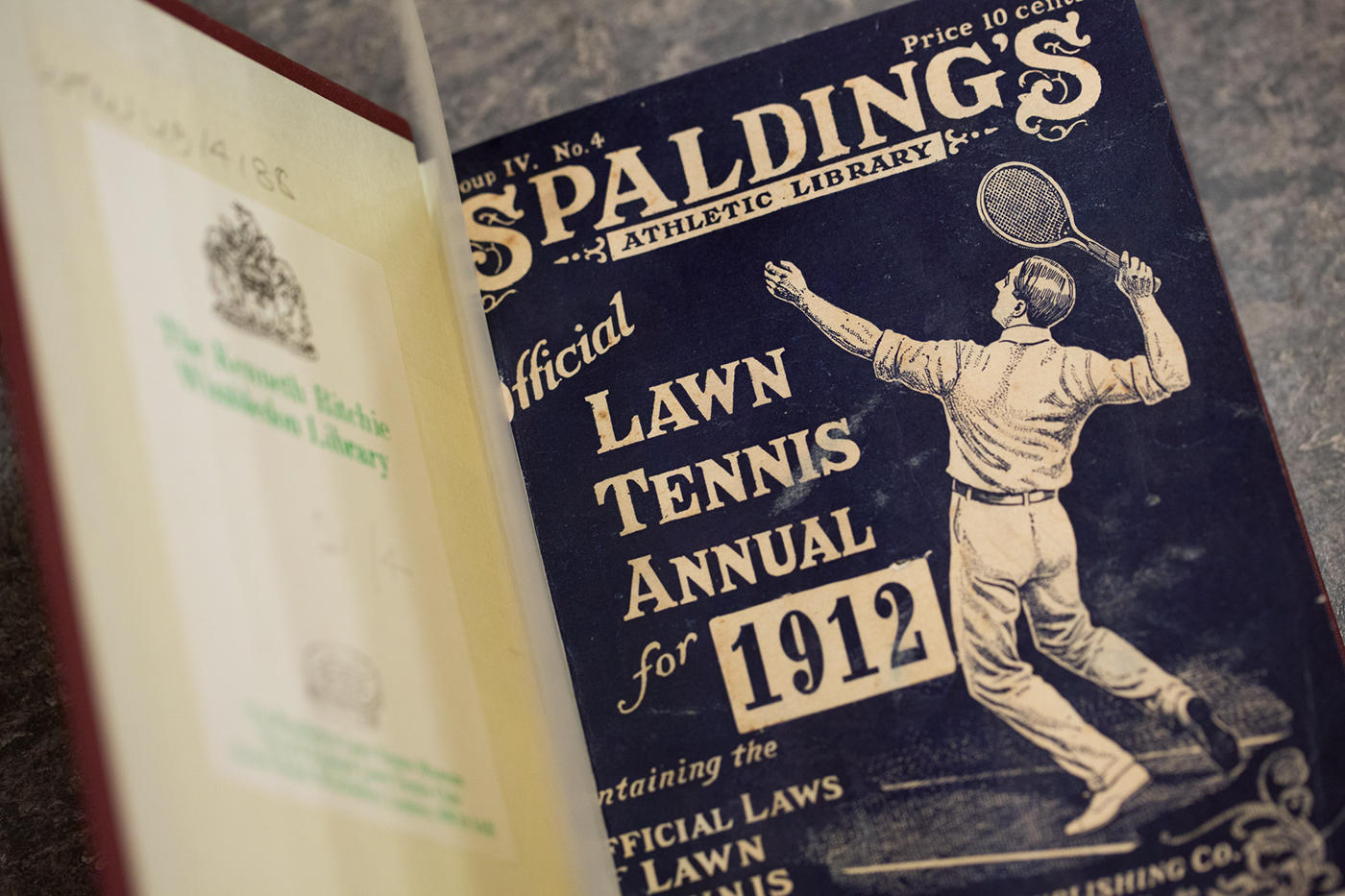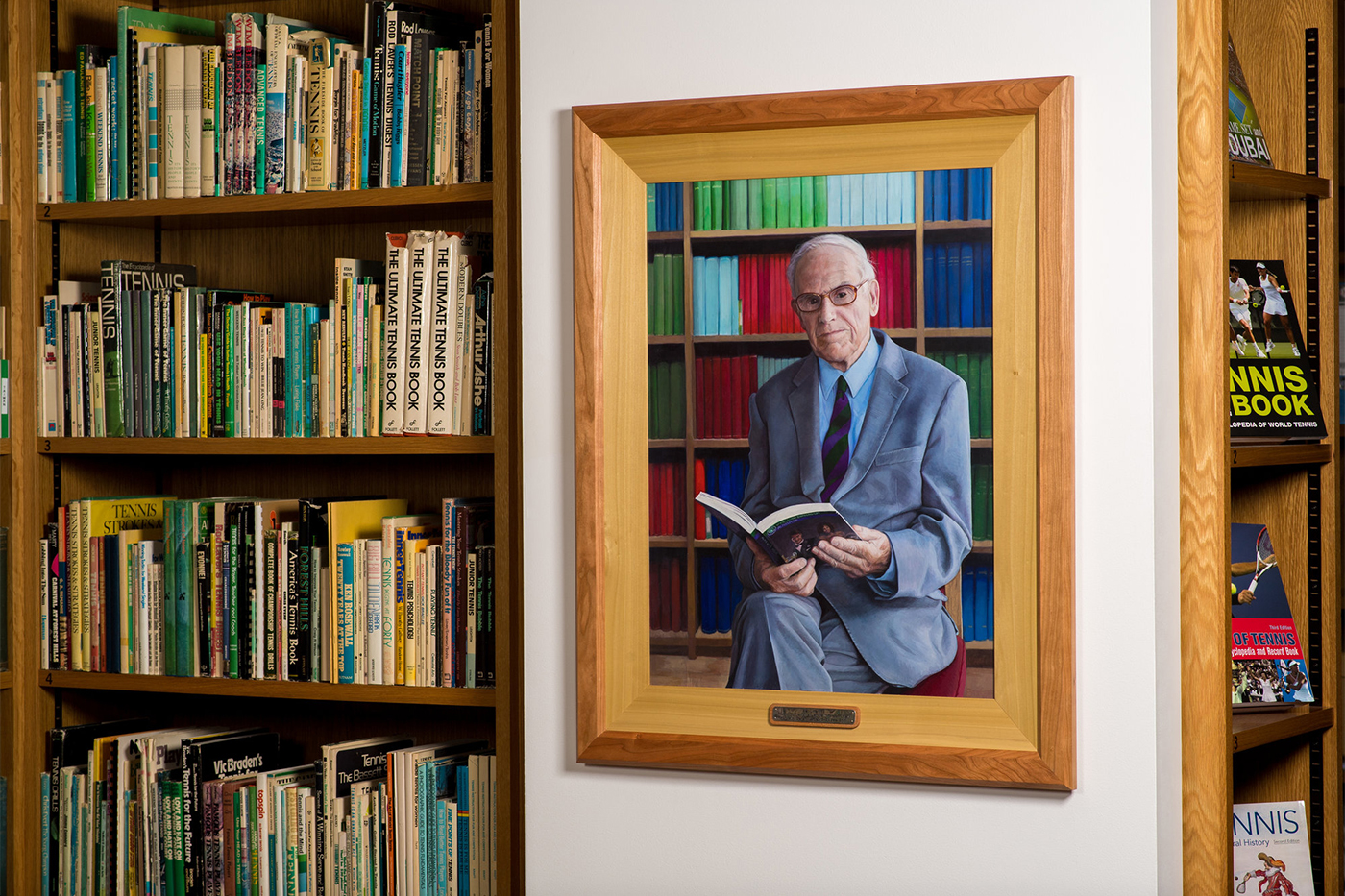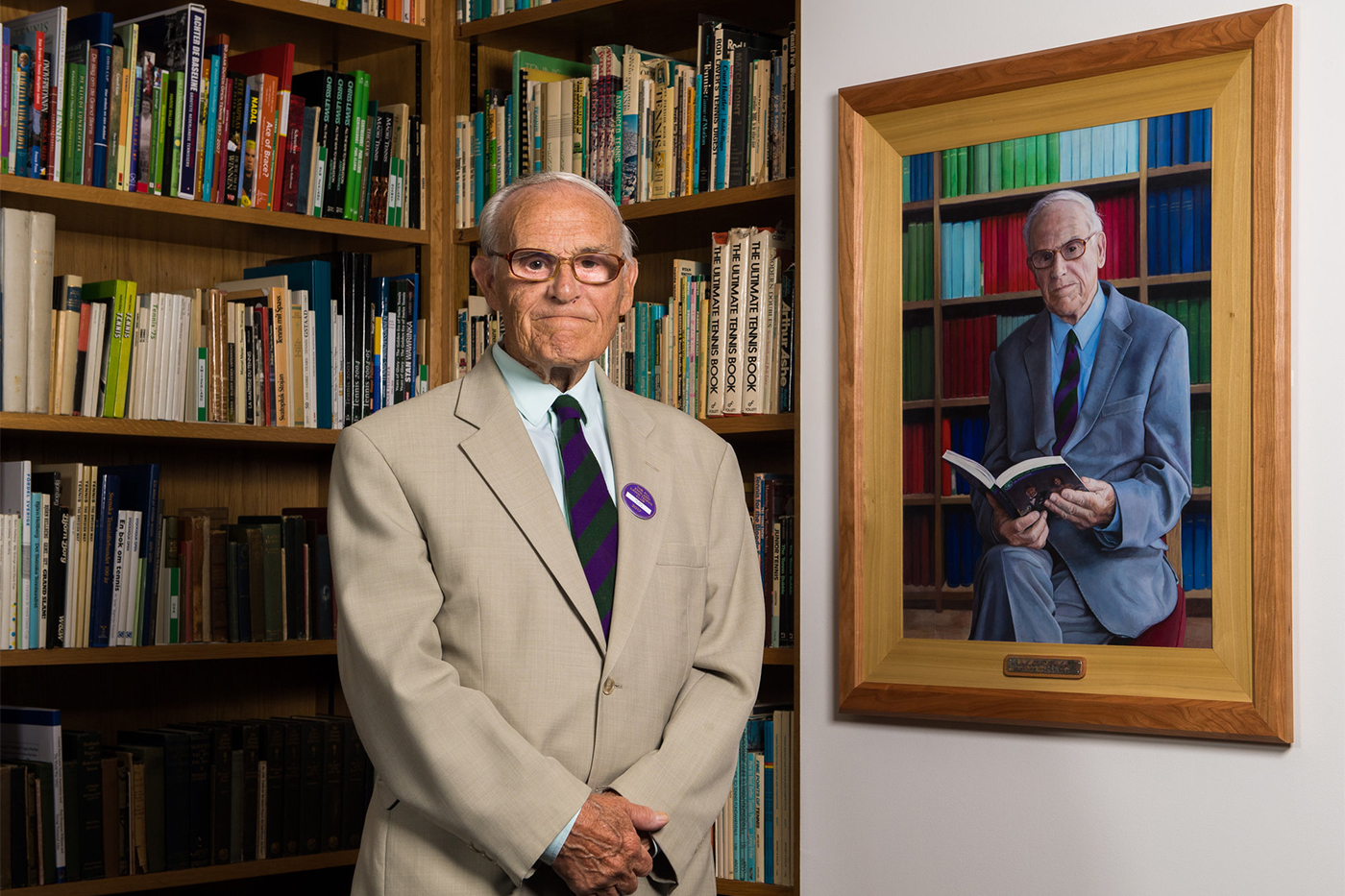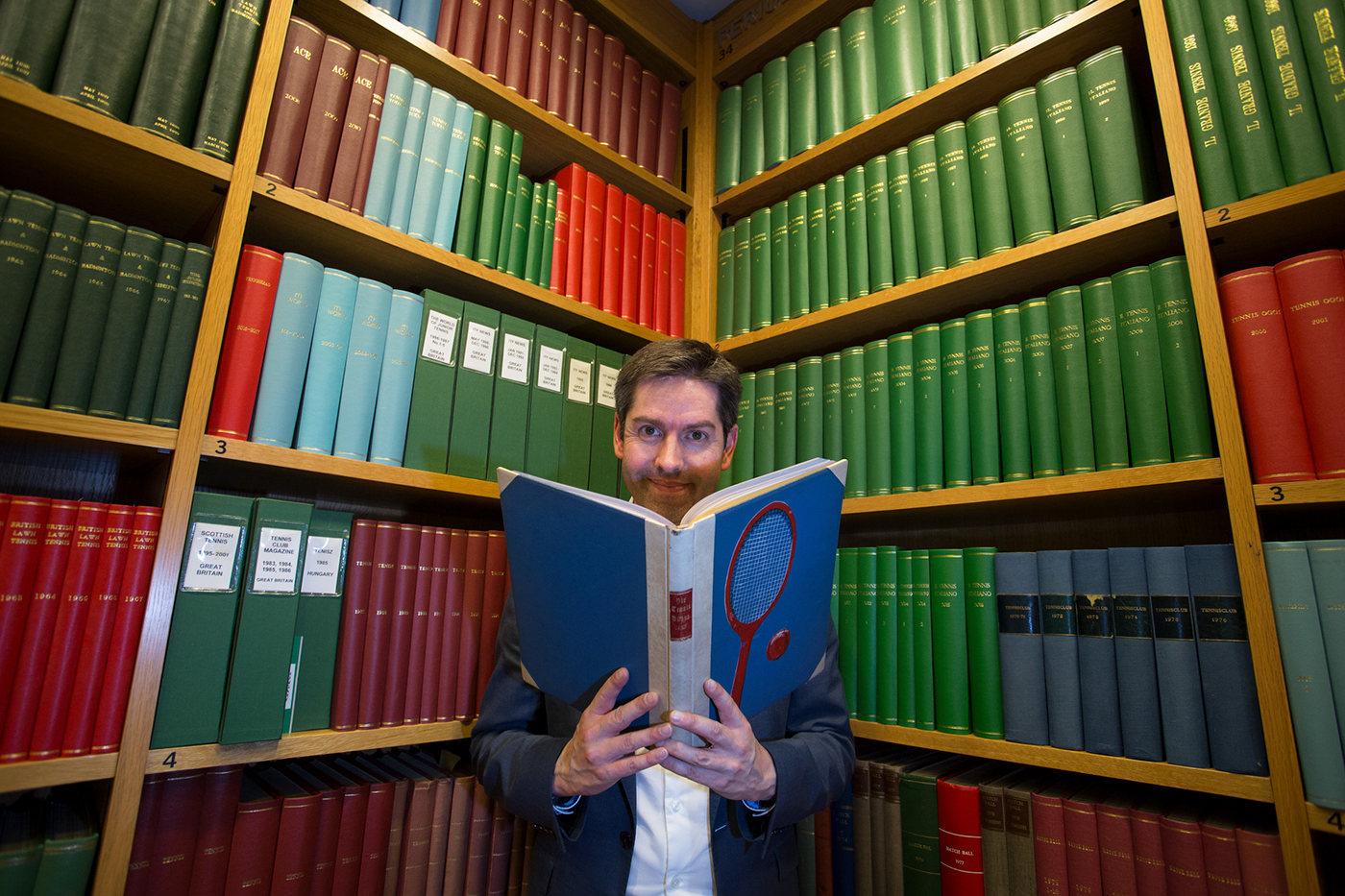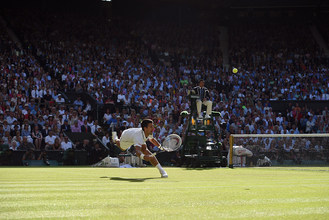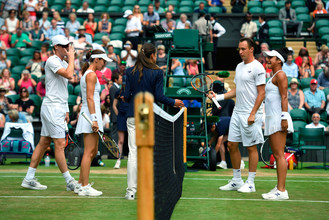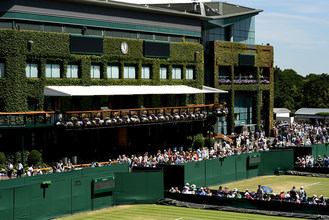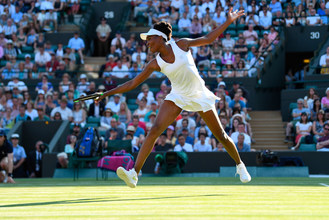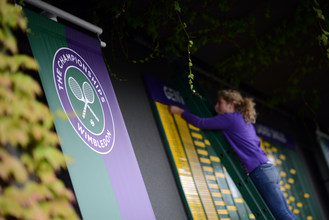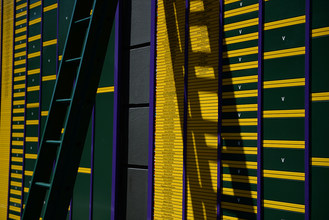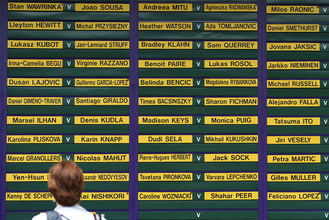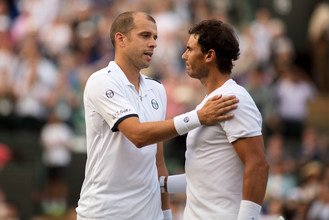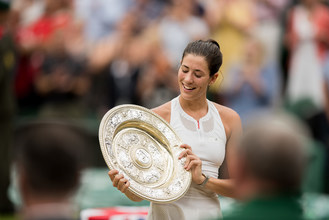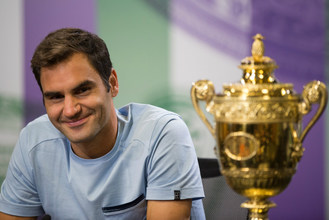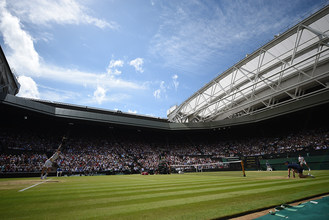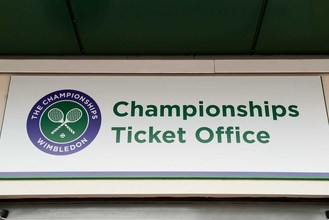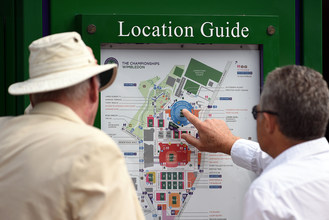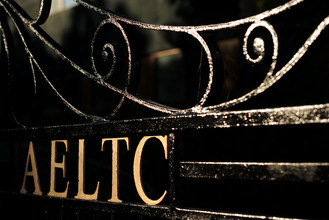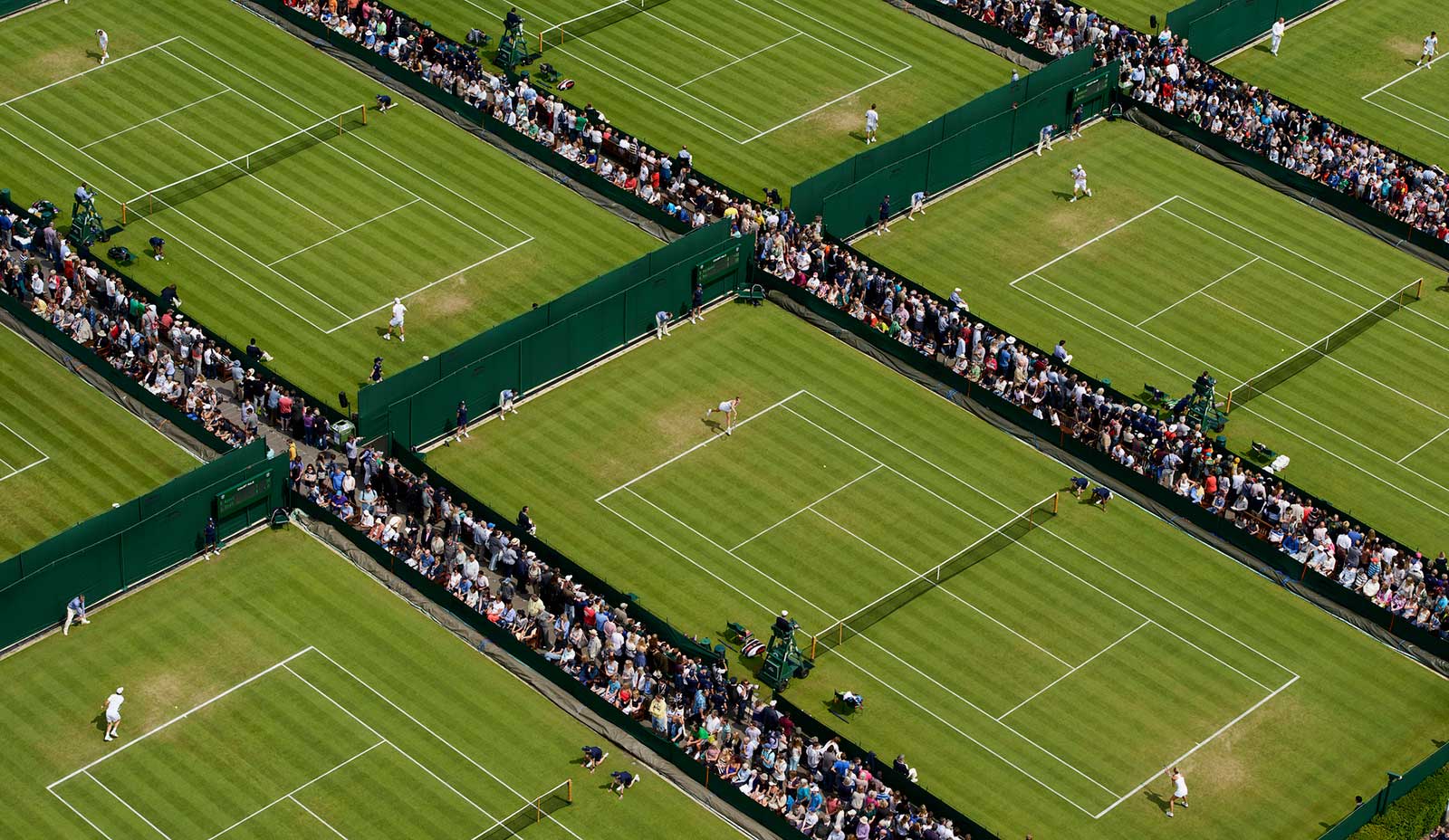In celebration of the Kenneth Ritchie Wimbledon Library’s status in charting not only the history of The Championships but the history of lawn tennis, Librarian Robert McNicol has assembled a 13-day guide showcasing the stellar sources available. Here he explains which titles he has selected for Day 3.
Most tennis fans know about the players and milestone matches that they have watched in person or on television, and only have a faltering acquaintance with the stars, the stories and scintillating rivalries of previous eras. That’s why detailed histories of The Championships make such riveting reading – and, between them, Fifty Years of Wimbledon by A. Wallis Myers (published in 1926), 100 Years of Wimbledon by Lance Tingay (1977) and Wimbledon: The Official History by John Barrett (2016) conjure the continuum of competitive action, brimming with authority, detail, fascinating photos of the social scene and (in the early days) some rather rum player poses.
Fifty Years of Wimbledon was published by The Field - the world's oldest country and fieldsports newspaper - to mark the 50th anniversary of the tournament, which started in 1877. The Field brought its readers the “cream of rural life” (if not yet the strawberries) and was very important in the setting up of the All England Club; the first trophy was called The Field Cup. Today, the publication proud of the sporting associations it has forged since 1853, bills itself as reading matter for those who “love fieldsports, errant terriers and very foxy friends at hunt balls” - which gives some idea of the social milieu in which lawn tennis originated.
But back to Wallis Myers’ celebratory volume. “It is the detail in it that makes it important,” says Robert. You can open the book and pick a sentence at random and every page delivers a phrase that is telling in the context of the evolution of tennis. In the section recording the 1895 Championships, for instance, there is the following statement: “Despite the fact that Miss Jackson led her four-love in the first set of the final (employing on one occasion a two-handed volley that ‘fairly brought down the house’), Miss Cooper, with Mrs Hillyard undefending, took the ladies’ championship…”
Right up to 1921, the defending champion arrived at Wimbledon just for the last match. It was played as a challenge round
Mrs Hillyard undefending? Robert explains: “Mrs Hillyard had won the ladies' singles in 1894 and chosen not to return to defend her title. Right up to 1921, the defending champion arrived at Wimbledon just for the last match. It was played as a challenge round.”
100 Years of Wimbledon by Lance Tingay - like Wallis Myer, a Daily Telegraph tennis correspondent - ushers us into the Open Era and a fandom that had become more interested in players as personalities. “The book is divided into decades: 1920s and Suzanne Lenglen, 1930s the Fred Perry era, mid-1940 to mid-1950 the emergence of Australian and American eminence, mid-1950s to mid-1960 Shamateurism and then into the Open era,” Robert explains. It also introduces potted biographies of notable players and comprehensive results from the quarter-finals onwards.
Another day, another record for @rogerfederer. Goes where no man has gone before at #Wimbledon. pic.twitter.com/WVY71zZpyw
— The Field (@thefield_in) July 4, 2017
Bringing the tennis fan right up to date, John Barrett’s weighty and profusely illustrated Wimbledon: The Official History – originally published in 1986 to mark the100th Championships, and reissued last year – puts each year of Wimbledon tennis in a historical context. Covering such a sweep of time and records through words and images, it also marks the subtle changing appearance of tennis at Wimbledon. For example, in contrast to what you might think, the all-white clothing rule has become stricter in modern times.
According to Librarian Emeritus Alan Little, there was no regulation originally. “They played in white like cricketers on the grass," he says. "In 1963, the players were asked to wear ‘predominantly white’ clothing. The rule was tidied up in reaction to the 1970s ladies’ dress designer Teddy Tinling and became ‘almost entirely’ white in 1995.”
The Centre Court Story Wimbledon by Maurice Brady - "a small man with a mighty pen", according to Alan - was published in 1957 with an introduction by 1954 champion Jaroslav Drobny. A different type of history, it tells the story of The Championships through concise chapters devoted to various champions that Brady had watched play.
The Kenneth Ritchie Wimbledon Library, founded in 1976 by Alan Little, holds one of the largest and most diverse collections of tennis literature in the world. Dating from the birth of Lawn Tennis in the 1870s to the present day, the collection holds books, magazines, yearbooks, annuals, programmes and newspaper cuttings from more than 80 countries and continues to grow all the time.

